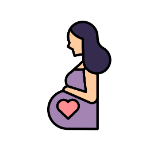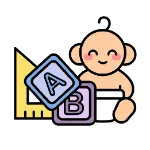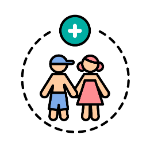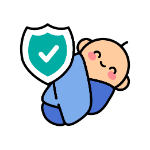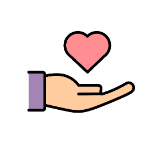
Parenting
Learn Baby Sign Language To Communicate With Your Baby
3 min read | Updated on 06-10-2021 by HappyPreggie
(Image credit to mybabycantalk.com)
Baby sign language or also known as baby signing is a set of hand gestures and movements for communicating with babies. The symbolic gestures normally relate to the common words you use with your babies every day. This is a helpful tool to start conversations with your baby since babies are able to understand simple signs around 6 to 8 months old. "Kids are beginning to connect the sound of words with what they mean”, said scientist Gerald W. McRoberts from Haskins Laboratories, a speech-and-language research institute.
Benefits of Sign Language
(Image credit to Freepik)
Many parents wonder if signing makes a baby talk late or less. But researchers Dr. Acredolo and Dr. Goodwyn definitely disagreed, in fact, they stated that babies who begin with sign language as a communicative tool developed verbal language skills at a faster rate. Here are some other benefits of baby sign language:
- Reduce communication barrier between baby and parents
- Increase baby’s ability to communicate before speaking
- Fewer baby tantrums since their message can be understood by parents
- Relaxed parents since they would understand baby’s needs and wants
- Acts as a starting gear for baby’s language learning
- Enhances baby’s intelligence
- Creates a stronger bond between baby and parents
How to teach baby sign language?
(Image credit to baby.lovetoknow.com)
If you’d like to start using baby signs, speech pathologists recommend keeping these tips in mind:
- Begin early - You may start teaching your baby sign language as soon as your baby starts showing interest in communication, most probably around 6 to 8 months. Most babies, however, respond back somewhere between 10 to 14 months.
- Start with a few signs - Start with signs that are present in everyday conversations with your baby, while ensuring they are meaningful, important and useful.
- Introduce signs naturally - Don’t make learning sign language a parent-driven lesson. Instead, expose babies to words repeatedly by using daily conversation
- Say the word when signing - Say the word that signifies the sign you make at your baby
- Don’t sign fast - Repeat the sign several times or point towards the object when you sign out the object’s name so that your baby will be able to understand what you mean.
- Follow your baby’s signs - Most babies produce their own signs. It is advisable to use it back since it is meaningful for your baby.
- Sign closer to your face - Babies often look at the face and eyes. So, make the signs close to your face as the chances of them noticing the signs are higher.
- Rewarding - Give babies the item they want until they make the sign themselves and present it to them as a reward as encouragement.
Best signs to get started with
Below are some of the most basic and common signs to get started with. Once your baby is able to catch your sign languages you may go to more types of signs.
- Sleep: Fingers spread apart from the forehead slowly closing while going down to the chin.
- Hungry: A rubbed belly
- Eat/Food: Tapping the tips of fingers to mouth (like you’re eating) with palm face down and thumb touching fingers
- Milk: Squeeze fingers in and out (like you’re squeezing a cow’s udder)
- Drink: A cupped hand placed to the mouth
- More: Touch fingers to the thumb on each hand and then touch hands together at the fingertips repeatedly
- All done: Fingers facing up, twist your hands back and forth
- Up: Arms up
- Down: Palm facing down, with index finger pointed to the ground, and then lowering hand
- Mommy: Tap your thumb to your chin (open palm, fingers facing up)
- Daddy: Tap your thumb to your forehead (open palm, fingers facing up)
- Water: Spreading out the three fingers on one hand and then tap your index finger on your chin.
Communicating with your preverbal child will help boost your relationship as there will be less misunderstandings when it comes to figuring out what your baby is trying to express. Consider which word your family usually uses the most every day and pick the suitable baby sign to start with. Eventually, the communication will flow easier between both sides. Learn baby sign language now.
Want to read more? Check out how you can make potty training your child easier and some of these simple steps to handle your upset toddlers.
Join the largest support network for family health and well-being. Ready to get started?
Get started
